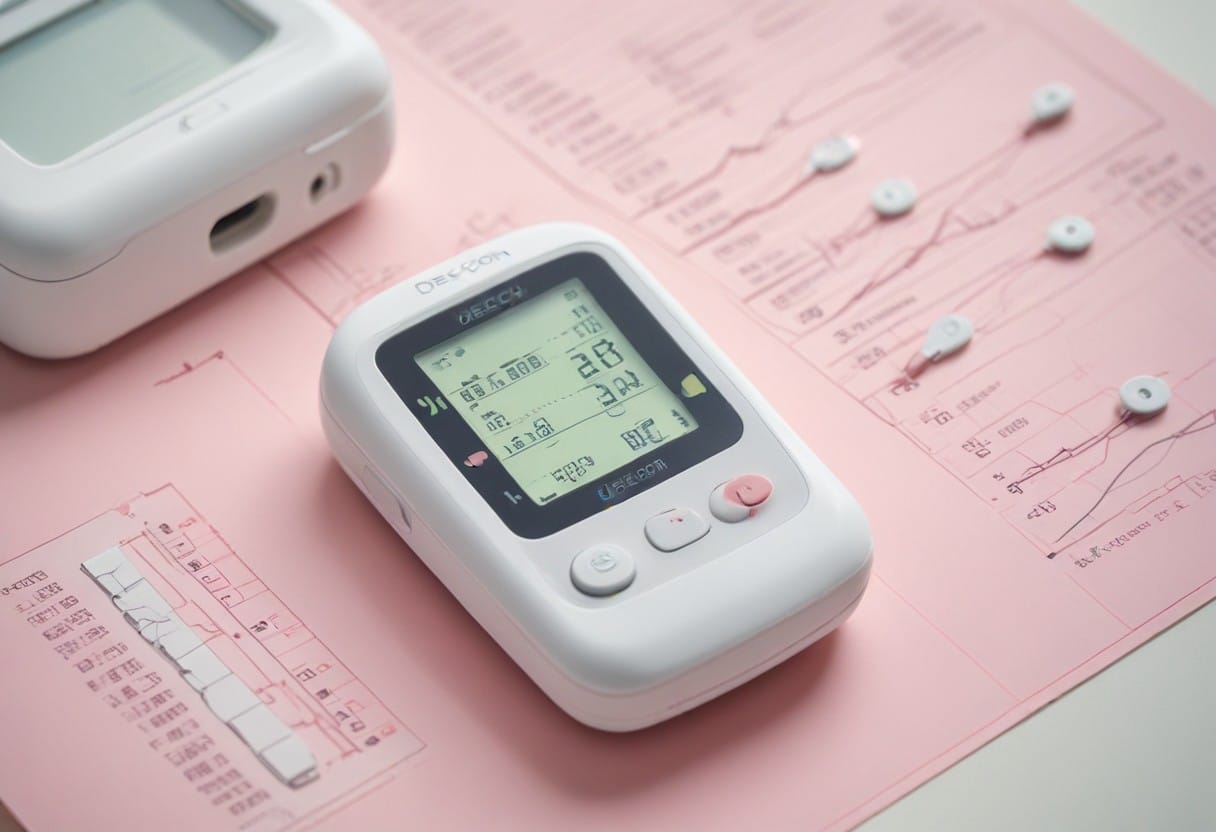The Apple Watch, a sleek combination of technology and fashion, has become an indispensable accessory for many. It offers an array of features from fitness tracking to messaging, all conveniently strapped to your wrist. However, some users have experienced an unexpected downside: rashes and skin irritation. If you’ve encountered this problem, you’re not alone. This article will delve into the causes of Apple Watch rash, how to prevent it, and effective treatments to alleviate symptoms.

What is Apple Watch Rash?
Apple Watch rash refers to skin irritation or a rash that develops on the wrist where the watch band sits. Symptoms can range from mild redness and itching to more severe reactions like blisters or swelling. These reactions can be frustrating, especially for those who wear their Apple Watch daily for health tracking or other functionalities.
Common Causes of Apple Watch Rash
Several factors can contribute to the development of a rash from wearing an Apple Watch. Understanding these can help you prevent and manage the issue.
- Allergic Reactions: Some people may be allergic to materials used in the Apple Watch or its bands. Common allergens include nickel and certain types of rubber or silicone.
- Moisture and Sweat: Wearing the watch during intense workouts or in hot weather can lead to sweat accumulation under the band, creating a moist environment that irritates the skin.
- Friction and Pressure: Tight bands can cause friction against the skin, leading to irritation. Conversely, bands that are too loose can also cause rubbing.
- Poor Hygiene: Accumulation of dirt, oils, and dead skin cells under the watch band can cause skin irritation. Regular cleaning of both the watch and the band is essential.
- Chemical Irritants: Lotions, perfumes, and other substances on your skin can react with the materials in the watch band, causing irritation.
Types of Bands and Their Impact
The type of band you use with your Apple Watch can significantly affect the likelihood of developing a rash.
- Silicone Bands: These are popular for their durability and flexibility but can trap moisture and cause irritation for some users.
- Leather Bands: Generally less likely to cause rashes, but they can absorb sweat and bacteria, leading to potential skin issues.
- Metal Bands: Nickel in metal bands can cause allergic reactions in sensitive individuals.
- Fabric Bands: These are more breathable but may not be suitable for workouts as they can absorb sweat and become a breeding ground for bacteria.
Prevention Tips
Preventing an Apple Watch rash involves several proactive steps. Here are some tips to help you avoid skin irritation:
- Choose the Right Band: Opt for hypoallergenic materials if you have sensitive skin. Apple offers several options, including sport bands made from fluoroelastomer and woven nylon bands that are generally gentler on the skin.
- Proper Fit: Ensure that your watch band fits correctly. It should be snug enough to stay in place but loose enough to allow air circulation.
- Hygiene: Clean your watch and band regularly. Use a soft, lint-free cloth dampened with fresh water and a mild, hypoallergenic soap if needed. Avoid harsh cleaning agents that can cause skin reactions.
- Dry Your Skin: After workouts or exposure to water, make sure your skin and the underside of the watch band are dry. Removing the watch for a short period can help your skin breathe.
- Rotate Bands: If you wear your watch constantly, consider rotating between different bands to give your skin a break.
- Avoid Lotions and Perfumes: Refrain from applying lotions, perfumes, or other chemicals on the wrist area where you wear your watch.
Recognizing Symptoms
Identifying an Apple Watch rash early can help you manage it effectively and prevent more severe reactions. Common symptoms include:
- Redness: Mild to intense redness on the skin where the watch band sits.
- Itching: Persistent itching that may worsen with sweat or moisture.
- Swelling: Swollen skin that can be tender to the touch.
- Blisters: In severe cases, small blisters or hives may develop.
- Dry or Flaky Skin: The skin may become dry or start to peel.
Treatment Options
If you develop a rash from your Apple Watch, there are several treatment options to consider:
- Remove the Watch: Give your skin a break from the watch. This is often the first step to allowing your skin to heal.
- Clean the Area: Gently wash the affected area with mild soap and water. Pat dry with a clean towel.
- Apply Topical Treatments: Over-the-counter hydrocortisone cream can reduce inflammation and itching. Calamine lotion may also provide relief.
- Moisturize: Use a hypoallergenic moisturizer to keep the skin hydrated and aid the healing process.
- Cold Compress: Applying a cold compress can help reduce swelling and provide soothing relief from itching.
- Avoid Scratching: Scratching can exacerbate the rash and lead to infection. If the itching is severe, consider taking an oral antihistamine.
- Seek Medical Advice: If the rash persists or worsens, consult a healthcare professional. You may need a prescription-strength treatment or to rule out other underlying conditions.
Alternatives and Solutions
If you continue to experience rashes despite taking preventive measures, consider exploring alternative options:
- Hypoallergenic Bands: Brands like Nomad, Epic Watch Bands, and Barton offer hypoallergenic bands compatible with the Apple Watch. These bands are often made from medical-grade silicone, titanium, or fabric that is less likely to cause irritation.
- Band Liners: Some companies offer liners that can be placed between the skin and the watch band, providing a barrier that reduces irritation.
- Periodic Removal: Regularly removing your watch for a few hours can allow your skin to breathe and reduce the risk of irritation.
- Skin Barriers: Applying a thin layer of barrier cream (such as petroleum jelly or a silicone-based product) before wearing your watch can help protect your skin.
- Alternative Devices: If the problem persists and significantly affects your comfort, you might consider switching to a different type of fitness tracker or smartwatch that uses materials more compatible with your skin.
Understanding Material Sensitivities
Understanding which materials cause sensitivities can help you make informed decisions about your watch and band choices. Here’s a closer look at common materials and their potential effects:
- Nickel: A common allergen found in some metal watch bands and clasps. People with nickel allergies should opt for bands labeled as nickel-free or hypoallergenic.
- Rubber and Silicone: These materials are generally well-tolerated but can cause issues for those with rubber allergies. Hypoallergenic silicone options are available.
- Leather: Although less likely to cause immediate reactions, leather can harbor bacteria and absorb sweat, leading to irritation over time.
- Textiles: Fabric bands are breathable and usually hypoallergenic but need regular cleaning to prevent bacterial buildup.
Apple’s Recommendations
Apple provides specific guidelines to help prevent skin irritation from their watches:
- Keep It Clean: Regularly clean both your wrist and the watch band.
- Keep It Dry: Ensure your wrist and band are dry to prevent moisture-related irritation.
- Avoid Tightness: Adjust the band for a comfortable fit that isn’t too tight or too loose.
- Choose the Right Band: Opt for bands made from materials that suit your skin type.
Real-Life Experiences
Hearing from others who have experienced Apple Watch rash can provide insight and reassurance. Many users have shared their stories and solutions on forums and social media. Common themes include switching to hypoallergenic bands, improving hygiene routines, and applying topical treatments.
Conclusion
Apple Watch rash, while frustrating, is a manageable issue. By understanding the causes, taking preventive measures, and knowing how to treat symptoms, you can continue to enjoy the benefits of your Apple Watch without discomfort. Prioritize your skin’s health by choosing the right materials, maintaining good hygiene, and listening to your body’s signals. If problems persist, don’t hesitate to seek professional advice to find a solution that works for you. Your Apple Watch should be a tool for enhancing your life, not causing irritation. With the right approach, you can keep it that way.




